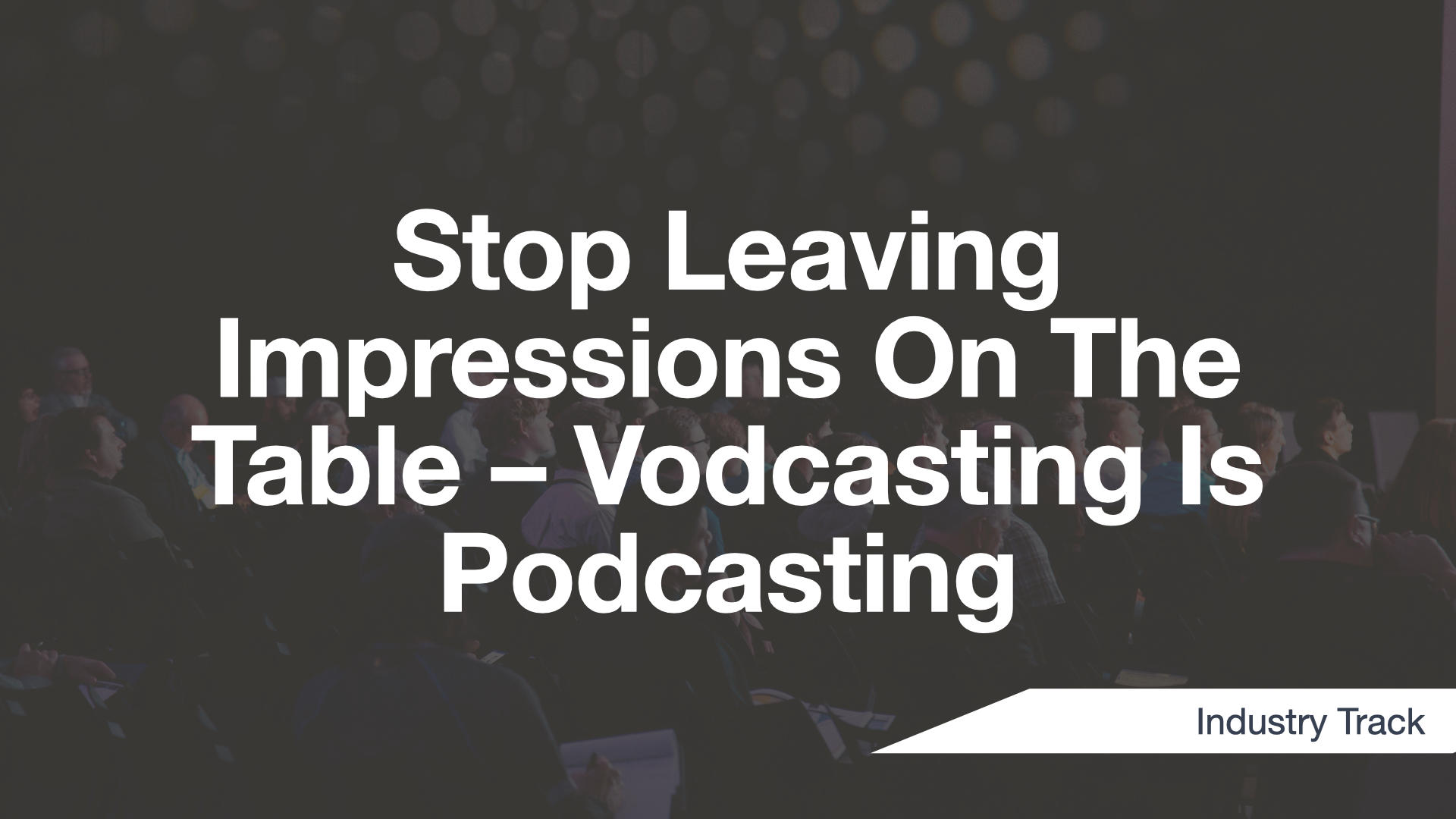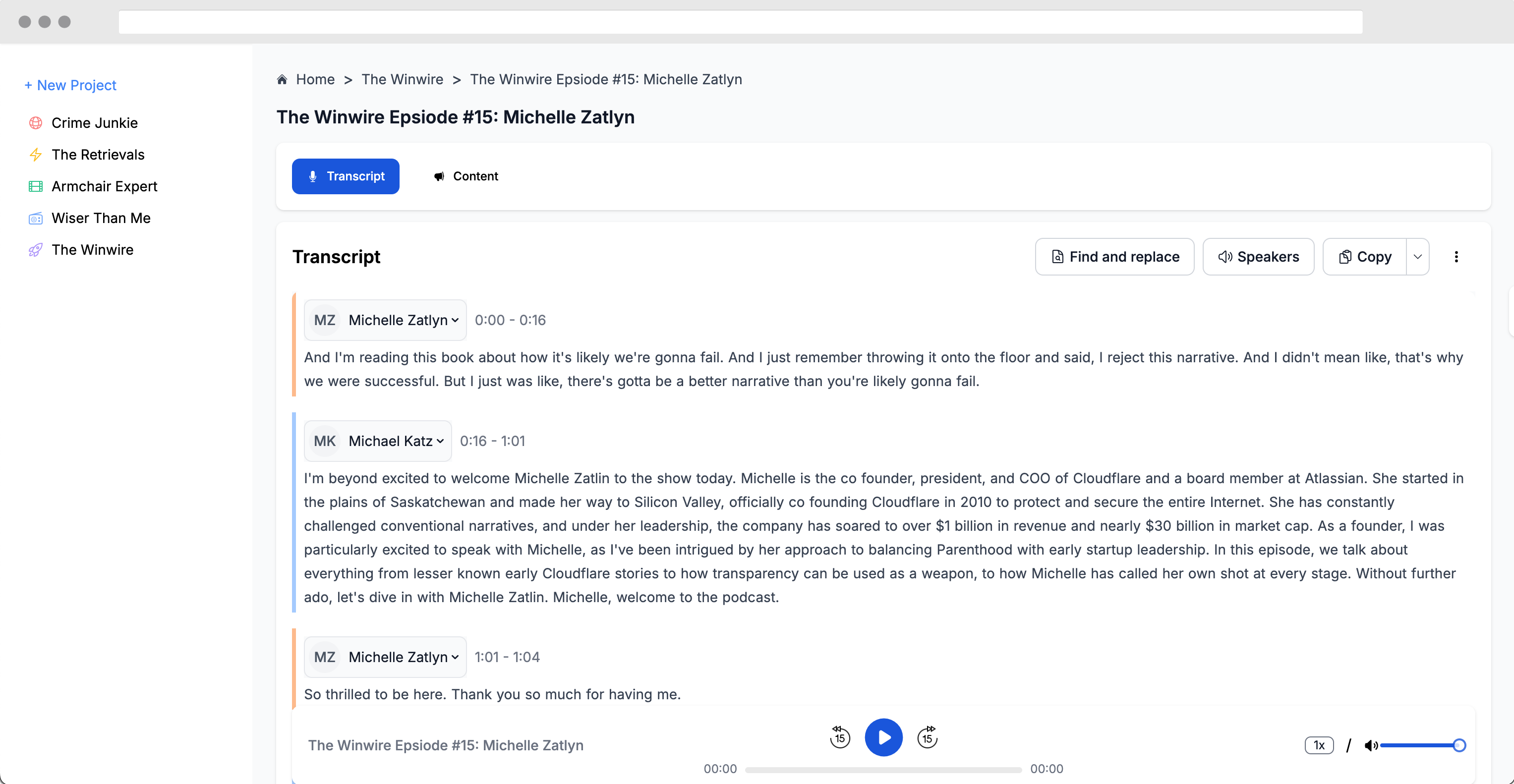Stop Leaving Impressions On The Table – Vodcasting Is Podcasting

Key Takeaways
Video Podcasting is Essential: The shift from audio-only to video-inclusive podcasting has become crucial. Research indicated that 75% of podcast consumers now expect podcasts to be available in both audio and video formats. This change in consumer behavior necessitates that podcasters adapt to meet these expectations.
Performance and Engagement: Video components in podcasts significantly enhance performance and engagement. Advertisers and brands have found that video podcasts drive better results, with higher conversion rates and more effective audience reach, particularly among younger demographics.
Adaptability in Advertising: Advertisers need to be flexible and creative in their approach to video podcasting. Different types of video content, from face-on-screen to product demonstrations, can be tailored to fit the comfort level and style of the podcast host, ensuring authenticity and effectiveness.
Attribution Challenges: While pixel-based attribution does not translate seamlessly from audio to video, alternative methods such as unique URLs, promo codes, and surveys can be used to measure the success of video podcast advertising campaigns.
Host-Read Ads Still Reign: Despite the evolution towards video, host-read ads remain the most effective form of advertising in podcasts. The personal connection between the host and the audience continues to drive the best results.
Overview
Carl Weinstein, COO of Locked On Podcast Network, highlighted the network's extensive reach in sports podcasting, producing daily content for over 220 shows. He discussed the network's transition into video podcasting, driven by consumer research and their acquisition by Tegna, which brought expertise in video distribution.
Hilary Ross Shafer from Veritone One emphasized the importance of video in advertising, noting that video podcasts offer enhanced engagement through visual elements and clickable links.
Dylan Stopper from Game Time shared that video components significantly boosted their podcast advertising performance, particularly among younger audiences.
Jay Nachlis from Coleman Insights presented research showing a shift in consumer behavior towards video podcasts, underscoring the need for publishers to adapt to this trend.
The panel collectively stressed the importance of creative quality and authenticity in video content, and the challenges and strategies around attribution in video podcast advertising.
Core Concepts
The Evolution of Podcasting: From Audio to Video
The podcasting industry has seen a significant shift from audio-only formats to incorporating video. This evolution is driven by changing consumer preferences and the need to stay relevant in a competitive market.
Key Points:
Research showed that 75% of podcast consumers now define podcasts as both audio and video.
The dominant way people consume their favorite podcasts has shifted from audio-only to a combination of audio and video.
Platforms like YouTube and Spotify are increasingly prioritizing video podcasts.
Examples:
A study conducted by Coleman Insights and Amplify Media revealed that 42% of podcast consumers now use both audio and video to consume their favorite podcasts.
Spotify has started recommending video podcasts on its homepage, indicating a shift towards video content.
Quotes:
If you're not offering your podcast in some video form, people are seeking it. They're looking for it. - Jay Nachlis
The definition of a podcast was about to change, and we had to evolve very quickly with it. - Carl Weinstein
The Impact of Video on Podcast Advertising
Incorporating video into podcasts has proven to enhance the effectiveness of advertising campaigns. Video podcasts offer unique opportunities for product placement, visual engagement, and higher conversion rates.
Key Points:
Video podcasts allow for on-screen product displays and clickable links, enhancing the advertising experience.
Advertisers have found that video components drive better performance, particularly for younger audiences.
Different types of video content can be adapted to fit the style and comfort level of the podcast host.
Examples:
GameTime found that video components in their podcast advertising campaigns consistently drove better performance compared to audio-only formats.
Veritone One has been incorporating video into their podcast advertising for a long time, leveraging the benefits of visual engagement and clickable links.
Quotes:
The power of the creative is just more powerful from a video standpoint. - Dylan Stopper
Video podcasting is something we were first in line to do. We've been very early adopters to that. - Hilary Ross Shafer
Overcoming Attribution Challenges in Video Podcasting
One of the main challenges in video podcasting is the lack of pixel-based attribution, which makes it difficult to measure the success of advertising campaigns. However, alternative methods can be used to track performance and ensure effective advertising.
Key Points:
Pixel-based attribution does not translate from audio to video, creating a gap in data for advertisers.
Alternative methods such as unique URLs, promo codes, and surveys can be used to measure the success of video podcast advertising.
Brands need to adapt and evolve to leverage video podcasting effectively.
Examples:
Veritone One uses a variety of metrics, including unique URLs and last-click attribution, to measure the success of their video podcast campaigns.
GameTime uses multiple signals, including promo codes and surveys, to make informed decisions about their video podcast advertising.
Quotes:
Brands are going to need to adapt and evolve with the space. - Bryan Goldmark
We let data guide decisions, not make decisions. - Dylan Stopper
Conclusion
The shift towards video podcasting is not just a trend but a necessary evolution in the podcasting industry. As consumer preferences change, podcasters and advertisers must adapt to meet these new expectations. Video components in podcasts enhance performance, drive better engagement, and offer unique opportunities for creative advertising. Despite the challenges in attribution, alternative methods can be used to measure success and ensure effective advertising campaigns. Host-read ads continue to be the most effective form of advertising, leveraging the personal connection between the host and the audience. As the industry continues to evolve, staying ahead of these trends will be crucial for success.
Food for Thought
How can podcasters balance the need for high-quality video content with the potential increase in production costs?
What innovative methods can be developed to improve attribution and measurement in video podcasting?
How can advertisers ensure authenticity and effectiveness in their video podcast campaigns while adapting to different types of video content?
Reference Tools, Platforms, and Resources
YouTube: A major platform for video podcasting, offering opportunities for visual engagement and discoverability.
Spotify: Increasingly prioritizing video podcasts, making it a key platform for reaching podcast consumers.
Veritone One: An advertising agency with expertise in incorporating video into podcast advertising campaigns.
Coleman Insights: A research firm providing valuable insights into podcast consumer behavior and trends.
GameTime: A company leveraging video podcasting to drive performance and reach younger audiences.

A study surveyed 1,000 podcast consumers between the ages of 15 and 64 across the United States.
75% of podcast consumers said a podcast should be defined as audio or video.
22% of podcast consumers said a podcast should be defined as audio only.
3% of podcast consumers said a podcast should be defined as video only.
52% of podcast consumers initially consumed their favorite podcasts as audio only.
42% of podcast consumers now consume their favorite podcasts in both audio and video formats.




